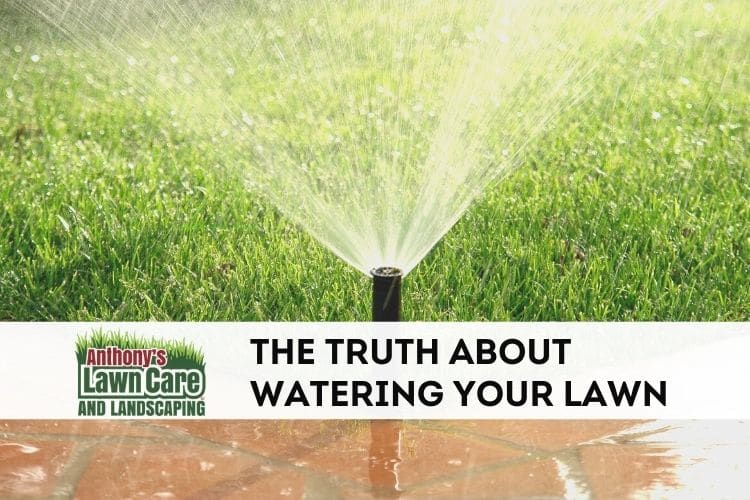The average American homeowner does not think too much about watering their lawn. They just pull out a house or turn on a sprinkler system at random times and for random amounts of time with random amounts of water. But that’s a recipe for an unhealthy lawn. Here are some basic tips to quickly bring you out of that chaos and make you a lawn-watering master.
Time of day
Possibly the most important detail to get right when watering a lawn is the time of day. While this can create difficulty for those whose schedules don’t make it convenient — or those who like to sleep in — watering in the early morning is the best time. You don’t have to make it out at the crack of dawn, though, just try to finish before 10 a.m.
Watering at other times of day creates issues that you’d be wise to avoid. If you water after 10 a.m. and before 4 p.m. or so, the sun will be at its full power and evaporation will undo most of your work. Doing it in the morning also gives the lawn water to better face the heat of the day. Watering in the evening, while okay in moderation, has the risk of giving moisture too much time to sit on the lawn. Especially when paired with overwatering, watering at night can create the environment for fungal diseases to emerge and damage your lawn.
Amount of water
Another key area is determining how much water to apply. Something to keep in mind is you may not even need to water your lawn. If your area gets a decent amount of rain, and your grass is green and springs back when you step on it, watering may just create overwatering issues, like weak root growth and water runoff. But if you step on your lawn and your footprint lingers, it means the grass doesn’t have the moisture it needs to bounce back quickly. Color can also be an indicator, although brown grass can be a natural dormancy cycle too.
But if your grass does need water, you should apply enough to keep the first six inches of soil moist. This takes about an inch of water to accomplish. Two common tools to measure this are an empty tuna can and a screwdriver. Measure off an inch in the tuna can and six inches on the screw driver. If you have an inch of water in the can (which you’ve placed out in the grass as you water) and your screwdriver can easily slide through the first six inches of soil, you’ve properly watered the lawn.
New grass seed
For recently spread grass seed, many of the rules above go out the window. You should water the lawn with the same goal of six inches of depth and one inch of water, but do this twice a day, morning and evening. You should also do this before you scatter the seed, so the seed will have a moist place to settle and sprout. Dry seeds can become damaged and die.
During this first year, you may need to maintain this twice-a-day routine, but once the grass reaches maturity, slowly taper off the evening watering. While you gradually lessen the amount of water given at the end of the day, increase the morning watering amount to make up for it.
Other details to consider It can be pretty time consuming to deal with all this on your own. But creating a schedule of maintenance with a lawn-care company or buying a sprinkler system with a timer can eliminate the need to worry about what time of day you need to go out to water and if you’re using the right amount of water. Those in Bloomington, Indiana, and the surrounding area can call Anthony’s at (812) 345-5694 to help them get set up for proper lawn watering.


Recent Comments